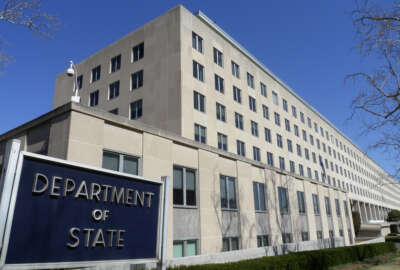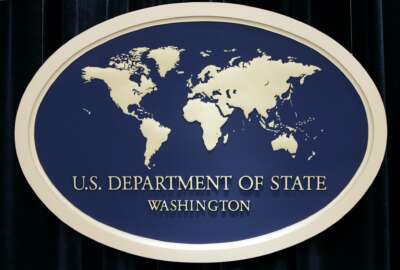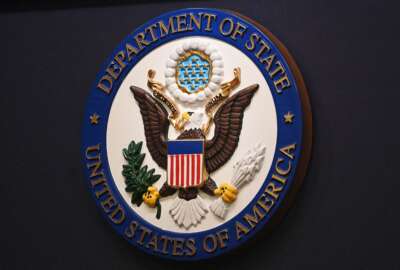State Department making sure change is more than just a name
Kelly Fletcher, the State Department’s CIO, said the newly named Bureau of Diplomatic Technology is aligning cybersecurity and customer experience.
The Bureau of Information Resource Management at the State Department is no more. Say hello to the Bureau of Diplomatic Technology.
The name change from IRM to DT was in the works for more than a year, but State only finalized it earlier this summer.
Kelly Fletcher, the State Department’s chief information officer, said the name change is really one piece of a larger puzzle.

“If all we do is change the name, we have failed. That is not what we’re doing. What we’re doing is we’re realigning ourselves to really focus on the intersection of cybersecurity and customer experience,” Fletcher said on Ask the CIO. “What we want to do is make sure that we are helping diplomats. We are driving diplomacy with technology. So this is part of our broader initiative to modernize and part of that is reorganizing our organization. The name change was part of that.”
Former State CIO Keith Jones kicked off this effort to change IRM’s name back in 2022. When Jones left in May of that year, he said the goal was to create more cohesiveness across the entire department around technology.
Fletcher picked up that name change effort when she joined in October 2022.
“If I had come in and said, ‘Okay, day one my top priority is we change our name.’ Could we have done this faster? Oh, yeah, absolutely. We had to do some notification. We had to shop it around the building. But I wanted the name change to be meaningful and to be tied to an improved experience for the State Department,” she said. “So for us to start to make those meaningful changes where customers are going to the IT support center and getting the support they need, where we are now provisioning what we call tech for life. What that means is, if you are transitioning from Bogota to Berlin, you can come into DC and get a computer or a phone or both, and you bring that with you on your way to Berlin. So you have government equipment to check your government email on your way to Berlin. You have that while you’re at home catching up with your family in your transit there. We wanted to really show the changes that we’re making to be more responsive, more modern and then couple the name change with that activity.”
Fletcher added that anytime you change the name of an organization, there is risk, especially if others don’t see change happening in other areas to go with it.
The tech for life effort is an example of how the CIO’s office isn’t just putting lipstick on the proverbial pig.
Creating a “silent running posture”
Fletcher said by creating an initiative where all employees, both in the United States and those across the world are in a “silent running posture” where they have communication on government equipment all of the time no matter where they are.
“What I mean by silent running posture is you come to work and you turn on your computer, or you’re at home and you’re holding your phone, and everything works. You check your email, it works. You pick up your phone and make a phone call, it works. What I want is silent running posture globally, and also I want to partner that with security,” she said. “I’ll tell you that as soon as the phones don’t work, or emails out, or we’re getting hacked, or we’re having any one of those things, that’s all you talk about. That’s all you’re doing that day. So what I want is everyone to come in and just have everything work. If we only operated in DC, I think we would be high-fiving every day. But we’re not only in DC. We are in Ashgabat, Turkmenistan. We are in places that are remote, that don’t have strong local fiber. We are in places with power outages intermittently. This is a hard job at the State Department so as we look to the future this is a place where we want to say, if you’re not stable, if you don’t have stable power or stable internet, we’re going to get you stable and then we’re going to start to focus on how do we get you modern and cloud-based tools?”
One key piece to create that “silent running posture” is an upgraded network, Fletcher is calling “Tron,” after the 1980s video game and movie.
Better network visibility
“As we looked at how OpenNet, which is our unclassified environment, and how it’s architected, honestly, the way that it’s architected made sense when we designed it, but it doesn’t make sense anymore. It makes sense when you have really strong perimeter defenses, and then once you’re inside, it’s sort of a free for all. And very frankly, that doesn’t reflect the state of cybersecurity today. It doesn’t reflect a zero trust model,” she said. “As we move to zero trust, we had some options for how we modernized our infrastructure and our network architecture, and so what we’re trying to do is take advantage of the fact that many of our applications are cloud based. Today, wherever you are in the world, you get on to OpenNet, and then you tunnel back to DC, and then you go wherever you’re going. That is not efficient, especially when you’re in a bandwidth like limited environment. Also, that’s what you do when you’re in your office with your computer, but a lot of us are using phones all the time. We’re texting our colleagues when we’re home. We’re checking our email from home. Sometimes, if I’m in between meetings, even in the building, I’ll be using my phone to reply. You know what my phone doesn’t do? It doesn’t follow that path, my phone just goes straight to the cloud and goes straight to the application I need. As we thought more about this, and as we start adding on these important zero trust initiatives, like identity, end user device and all of these pillars of zero trust get more robust. We realized we had an opportunity to change our network architecture, and to say applications are going to do encryption on their end, and we are going to go straight from like a transport only environment to the application that we need to touch. That’s going to reduce latency, especially in those places that are struggling with latency, and frankly, it makes our environment a little less complex.”
The upgraded network also will improve State’s cyber posture by making it easier to apply zero trust principles.
Fletcher said Tron will give them more visibility of where employees are accessing the network from and therefore shutdown possible threats before they get going. Fletcher has to make Tron work at embassies and stations.
“Changing our network architecture doesn’t decrease our visibility, but we do think it will increase the user experience and also coupled with what we’re doing in identity, improve our cybersecurity posture,” Fletcher said. “Where we are in Tron is that we have a very strong design, and we’ve stood it up in several locations. We have the core backbone stood up and what we’re going to be doing the rest of this year, 2024 into 2025-2026 is we’re going to begin to field this thing at scale. There are places where I think that we’re going to airdrop some men and women. They’re going to work for three days, and we are going to be up and running. There are places where it’s going to take a lot more than that. So very truthfully, we’re on a campaign of learning.”
Copyright © 2025 Federal News Network. All rights reserved. This website is not intended for users located within the European Economic Area.
Jason Miller is executive editor of Federal News Network and directs news coverage on the people, policy and programs of the federal government.
Follow @jmillerWFED







